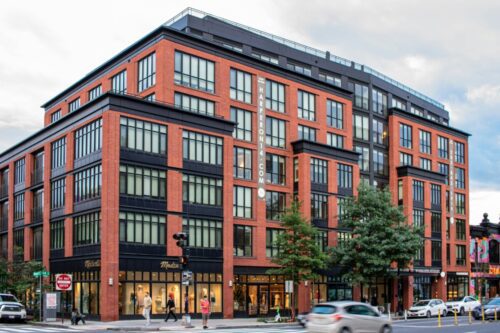As the U.S. economy transitions into 2025, the multifamily real estate sector stands at a pivotal moment. After navigating a period marked by inflationary pressures, rising interest rates, and post-pandemic shifts, the industry is poised for both new challenges and opportunities. While demand for rental housing remains strong, the outlook for multifamily properties in 2025 will be influenced by several key factors, including demographic shifts, economic conditions, and the evolving regulatory landscape.
Economic Environment and Interest Rates

In 2025, the U.S. economy is expected to experience moderate growth as inflationary pressures ease, and the Federal Reserve gradually stabilizes interest rates. However, the effects of elevated borrowing costs in previous years will continue to impact multifamily financing. Developers and investors are likely to face cautious lending environments, as banks and financial institutions assess the risk landscape more conservatively.
Higher interest rates have already cooled speculative multifamily development, particularly in markets with tighter profit margins. However, the demand for rental properties remains robust, and investors will continue to be drawn to multifamily assets for their relative stability and long-term income potential. As interest rates normalize, the market could see a renewed focus on acquisitions and development, particularly in growing metropolitan areas and secondary markets.
Sustained Rental Demand
The multifamily sector will continue to benefit from sustained rental demand in 2025. One of the primary drivers of this demand is the ongoing affordability crisis in the homeownership market. Although home prices may stabilize, high mortgage rates and tight credit conditions will keep homeownership out of reach for many Americans, particularly first-time buyers. This will reinforce the trend of renting as a long-term lifestyle choice for a significant portion of the population.
Demographics also play a critical role in shaping rental demand. Millennials, who are now in their prime working and family-formation years, remain a large segment of the renter population. Many have opted to delay homeownership due to financial constraints or lifestyle preferences, fueling demand for multifamily housing, especially in urban centers with access to amenities, jobs, and transportation.
In addition, Generation Z, which is entering the rental market in larger numbers, will continue to shape demand in key markets. This younger cohort tends to favor flexibility, mobility, and urban living, contributing to demand for smaller, more affordable units. At the same time, aging baby boomers downsizing from single-family homes are creating demand for higher-end, amenity-rich multifamily options.
Regional Disparities: Growth in the Sunbelt and Beyond
In 2025, regional disparities will remain a defining feature of the multifamily market. The Sunbelt region will continue to dominate as a growth hub, driven by population migration, job growth, and business-friendly policies. Cities like Austin, Nashville, Charlotte, and Phoenix are expected to see significant demand for multifamily housing as businesses relocate or expand in these areas, drawing in residents seeking lower costs of living and favorable tax environments.
In contrast, some coastal and high-cost urban markets, such as New York, San Francisco, and Los Angeles, may face slower recovery due to higher living costs, regulatory hurdles, and, in some cases, out-migration trends. However, these cities still possess strong long-term demand fundamentals, particularly as global economic conditions stabilize and international migration to major U.S. cities resumes.
Secondary markets, such as those in the Midwest and Southeast, will also attract more attention in 2025. Investors looking for higher returns and lower development costs will increasingly focus on smaller cities that offer growth potential and less competition compared to primary markets.
Affordability and Policy Pressures
Affordability will be one of the most pressing issues in the multifamily sector in 2025. Rising rents in many cities have outpaced wage growth, making it difficult for many tenants to afford housing. This has put pressure on policymakers at both the federal and local levels to address the housing affordability crisis through regulatory and incentive-based measures.
In response, many cities are likely to expand rent control policies, inclusionary zoning laws, and affordable housing mandates. For developers, this regulatory environment presents both challenges and opportunities. While stricter regulations can increase development costs and limit profitability, there is growing support for public-private partnerships and incentives aimed at encouraging the construction of affordable and mixed-income housing.
The Low-Income Housing Tax Credit (LIHTC) program and other federal initiatives will remain critical tools for promoting affordable housing development. Moreover, the Biden administration’s continued focus on housing policy reform, including potential funding for affordable housing and zoning reform, could have significant implications for the sector’s future.
Sustainability and Technology Integration
In 2025, sustainability will be more than just a buzzword; it will be a critical consideration for multifamily developers and investors. Increasingly stringent environmental regulations, along with growing tenant demand for eco-friendly living spaces, will push the industry towards greener practices. Energy-efficient buildings, renewable energy systems, and sustainable building materials will become standard in new developments.
Investors and developers will prioritize ESG (environmental, social, governance) factors in their projects, as sustainability not only reduces operational costs but also enhances property values. Properties with green certifications and energy-saving features will be more competitive in the rental market, appealing to environmentally conscious renters and investors alike.
Technology integration will also be a key differentiator in 2025. Smart home features, such as energy-efficient appliances, digital access control systems, and enhanced internet connectivity, will become standard expectations for renters. Moreover, property management platforms that leverage data analytics, AI, and IoT (Internet of Things) technology will enable more efficient operations, from maintenance scheduling to tenant communication.
Capital Markets and Investor Sentiment
Capital markets will play a significant role in shaping the multifamily outlook in 2025. With interest rates expected to stabilize, investor sentiment should improve compared to the uncertainty experienced in previous years. Institutional investors and private equity firms will continue to view multifamily properties as a safe haven due to their stable cash flows and lower vacancy risks compared to other asset classes like office or retail.
However, investors will likely be more selective in 2025, focusing on well-located, high-quality assets in markets with strong economic fundamentals. Value-add opportunities, where investors can enhance properties through renovations or improved management, will remain attractive, especially in markets where demand outstrips supply.
Foreign investment in U.S. multifamily properties could also see a resurgence as global capital seeks stable, income-generating assets. With the U.S. seen as a safe and transparent real estate market, multifamily properties will likely attract more international interest as economic conditions normalize.
Outlook for 2025 and Beyond
The multifamily property market in the U.S. in 2025 is expected to remain a strong and resilient sector, driven by steady demand from a diverse tenant base and continued interest from investors. While challenges such as affordability, regulatory pressures, and financing costs persist, the sector is poised for growth in key regions and niches.
The Sunbelt, secondary markets, and suburban areas will continue to be focal points for both renters and investors, as migration patterns favor these regions. At the same time, sustainability and technology will shape the future of multifamily development, as tenants seek greener and smarter living spaces.
In the long term, multifamily properties will remain an attractive asset class, offering stability and growth opportunities in a dynamic real estate landscape. With the right strategic approach, investors and developers can navigate the evolving challenges and capitalize on the sector’s continued potential in 2025 and beyond.

